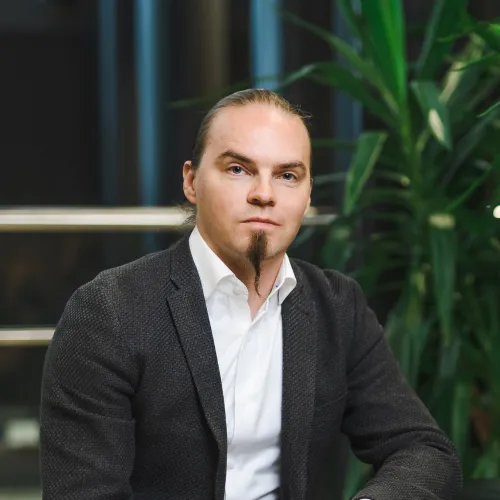Things fall apart; the centre cannot hold
– William Butler Yeats
We live in a complex world plagued by wicked problems – global challenges for the planet and its inhabitants. These monumental problems consist of a multitude of indefinable elements and phenomena. This intricate problem setup is an outcome of two centuries of intense industrialization and societal evolution that manifest technological and scientific advancement.
Attempts at solutions, however, quickly face methodological and theoretical problems. Paradigmatic scientific thinking alone cannot “solve” wicked problems, and we easily end up focusing on individual issues instead of root causes – and when we do, the challenge is overwhelming. Are we doing the right things the right way?
According to Indiana University professor Jutta Schickore, wicked problems evade the typical specialized scientific approach: “Wicked problems cut across different disciplines, engage different stakeholders (including non-scientists), are fluid, and cannot even be clearly formulated. They are urgent and need to be addressed before sufficient evidence is in.“1
Wicked problems cut across different disciplines, engage different stakeholders (including non-scientists), are fluid, and cannot even be clearly formulated. They are urgent and need to be addressed before sufficient evidence is in.
Blurring lines, not sharpening them
Inter- and multidisciplinary research should be promoted because wicked problems are systemic and cannot be solved within the confines of individual disciplines. Career path incentives are needed to break convention, encourage generalist capacities to emerge, and challenge seemingly impossible problems.
Increasing specialization sharpens the boundaries between disciplines. A narrow focus is normal in science – a trend that hinders understanding complexities or the big picture.
“Philosophers are people who know less and less about more and more, until they know nothing about everything. Scientists are people who know more and more about less and less, until they know everything about nothing,” formulated Nobel prize winner Konrad Lorenz, a controversial Nazi scientist.
Since Thomas Kuhn, it has been thought that science advances through ruptures or “revolutions”. Processes leading to breakthroughs can differ from normal science, making the average researcher oblivious to them. Could we train researchers to identify these opportunities in everyday scientific practice? Should we give them the opportunity to endorse breakthrough thinking in their research strategies? To what extent is it a cultural shift? These questions could be quite stimulating for an aspiring scientist.
This sort of thinking is not very apparent in applications of institutionalized science. Learning the academic protocol means focusing on funding (which sets the rules) and publication of peer-reviewed articles (which defines success), and so, academia drives researchers to publish (or perish). The same structure is enforced at university level, where degrees, papers, and citations are used as metrics for ranking and funding. There is little room for radically new questions, let alone new ways of organizing scientific works.
What hinders breakthroughs?
It is tempting to follow the standard of incremental goals and fast papers. However, does such a system not prioritize mediocrity in mindset and action? While the need for breakthroughs is widely recognized, it is unclear how academia should be reshaped to systematically create opportunities for them.
“A healthy scientific ecosystem is one where there’s a mix of disruptive discoveries and consolidating improvements, but the nature of research is shifting,” formulates Associate Professor Russell Funk from the University of Minnesota.2
If one wants to solve monumental problems, the situation is difficult. The current structure and funding of knowledge drive researchers to pursue rewards in the present science paradigm instead of taking risks to achieve breakthroughs. Streamlined and well-structured postgraduate study paths leave little room for ambition, and most novel ideas are only incrementally productive.
Professor Funk continues: “With incremental innovations being more common, it may take longer to make those key breakthroughs that push science forward more dramatically.”
If one wants to solve monumental problems, the situation is difficult. The current structure and funding of knowledge drive researchers to pursue rewards in the present science paradigm instead of taking risks to achieve breakthroughs.
Scientific breakthroughs – coincidence or design?
Breakthroughs are intriguing and revered, yet the processes behind them remain enigmatic. Some studies on the matter have been conducted, but the field is not easy to navigate. The stereotypical narrative is woven around an unexpected Eureka moment, akin to Archimedes' famous, sudden realization. The narrative has been prevalent since Vitruvius and classical antiquity.
Kuhn defined the evolutionary path of scientific knowledge and structures of scientific revolutions in the early 1960s. The emergence of radical innovations has been explained by, for instance, Schumpeter’s innovation theory and Kondratiev cycles, describing changes within systems, where incremental innovations create critical problems to which radical solutions are provided.
Attempts to understand breakthroughs have been made through various methods. Charles Sanders Peirce claimed in the late 19th century that breakthroughs cannot be predicted or explained by deductive or inductive methods, but by abductive reasoning.
Marx and Bornmann, in turn, proposed the so-called Anna Karenina model, by which breakthroughs are possible only when one of the pre-determined elements changes (funding, research results, etc.).3 Thomas Bayes developed mathematical models for prediction even when some factors are unknown. Still, the role of chance in breakthroughs seems substantial. This argument perpetuates the Eureka moment narrative and relegates breakthroughs to the margins of research.
Some scholars speak of serendipity, a word coined by Horace Walpole in the 18th century originally marking untargeted and fortunate discoveries, with etymology rooted in Persian folklore. Quite recently, Ohid Yaqub classified four types of serendipity and identified four mechanisms of serendipitous discovery in an effort to develop the taxonomy for studying breakthroughs.4
For reflection
The examples above illustrate that efforts to categorize and explain breakthroughs are longstanding and have even become central topics in the philosophy of science.
And lo! While attempts at understanding breakthroughs do occur, we still settle for the incremental. We could deduce that it is worth trying to understand what multidisciplinary practices and scientific culture breakthroughs call for and what the signature of a genuinely productive setup is.
Wicked problems demand radical solutions, and radical solutions require an occasional departure from business as usual. It is not just about understanding breakthroughs; it is about creating the conditions for them to flourish.
In conclusion, we need to rethink our approach to innovation and examine it with fresh eyes and bold strategies. We need generalists. It is time to challenge the status quo and find new definitions for what it means to innovate. Pressing problems will not wait, and the centre cannot hold without breakthroughs. Perhaps now is the time to embrace a newfound curiosity for untapped ways of exploration.
References:
1Mess in science and wicked problems, 2020, Perspectives on Science, Jutta Schickore
2Science and technology are becoming less disruptive, 2023, Spring 2023 Discovery Magazine, Rose Semenov
3The Anna Karenina principle: A way of thinking about success in science, 2012, Journal Of The American Society For Information Science & Technology, 63(10), 2027-2051, Lutz Bornmann, Werner Marx
4Serendipity: Towards a taxonomy and a theory, 2018, Research Policy, Ohid Yaqub

Karl-Erik Michelsen
Professor Emeritus

Petri Ajo



